MATTHEW KRISHANU DISCUSSES HIS WORK AND USING ART TO MAKE SENSE OF LIFE
TALENTED painter Matthew Krishanu has become an important voice in British art, and whether it has been solo exhibitions or as part of a larger group shows, he has delivered eye-catching works that have created thought-provoking moments.
He currently has deeply personal pieces on display at Leamington Spa Art Gallery & Museum and Herbert Art Gallery & Museum as part of the Coventry Biennial commission In Sickness and in Health, which runs until January 9 next year. He has work at the Southbank Centre and has a solo exhibition Arrow and Pulpit at Tanya Leighton in Berlin until next Saturday (18).
It continues a fascinating journey for an artist who paints people he is close to and explores memories of family and places through his work, along with taking a deep look at art through history.
Eastern Eye caught up with Krishanu to discuss his work, current exhibitions, inspirations, and future plans.
Is there any one piece or collection closest to your heart?
The one painting of mine that lives in my house is Elephants (2010), a small painting of my daughter, then a small baby, on a bed above which a mobile of coloured elephants hangs. Another key work is The Wedding Dress (2009), painted from life of my wife in her wedding dress, the year after we married. These are both currently showing at Leamington Spa Art Gallery and Museum.
Where do you draw the inspiration for your work from?
I like to paint and draw from my imagination, then develop scenes using a combination of memory, family photo albums, and art history. One of the first painters to inspire me and my approach was Rabindranath Tagore – I love the freedom with which he approaches his subjects (faces and places) and the mixed techniques he uses in his paintings and drawings.
Did lockdown impact you creatively?
In the summer of 2020, I was approached by the Southbank Centre to create paintings of key workers active during the pandemic. I chose to paint religious workers – I painted Rehanah Sadiq, a Muslim chaplain for two Birmingham NHS hospital trusts; Eve Pitts, Britain’s first Black female Church of England vicar; Margaret Jacobi, a rabbi at a progressive Jewish synagogue; and Deseta Davis, a pastor and prison chaplain. These were shown as billboard-scale prints around the Southbank Centre in an outdoor exhibition called Everyday Heroes.
Tell us a little more about your Coventry Biennial exhibition?
This is my most personal show yet. It includes nine paintings and eight are of my wife (painted from 2007 to now), and one is of my baby that I mentioned earlier. My wife is currently seriously ill and is in hospital – the latest paintings show her on a hospital bed. The series is called In Sickness and in Health.
What would you say is the key message from this collection?
I wanted to show the paintings in a sequence that tells the development of a life – including themes of joy (wedding and baby) but also suffering and illness. As part of the Coventry Biennial, two of my paintings of Tagore as a young man are displayed alongside a bust of Tagore (by Jacob Epstein) at Herbert Art Gallery and Museum. I am interested in the different stages of Tagore’s life – as a young man visiting England, then marrying, then as an old man and Nobel laureate.
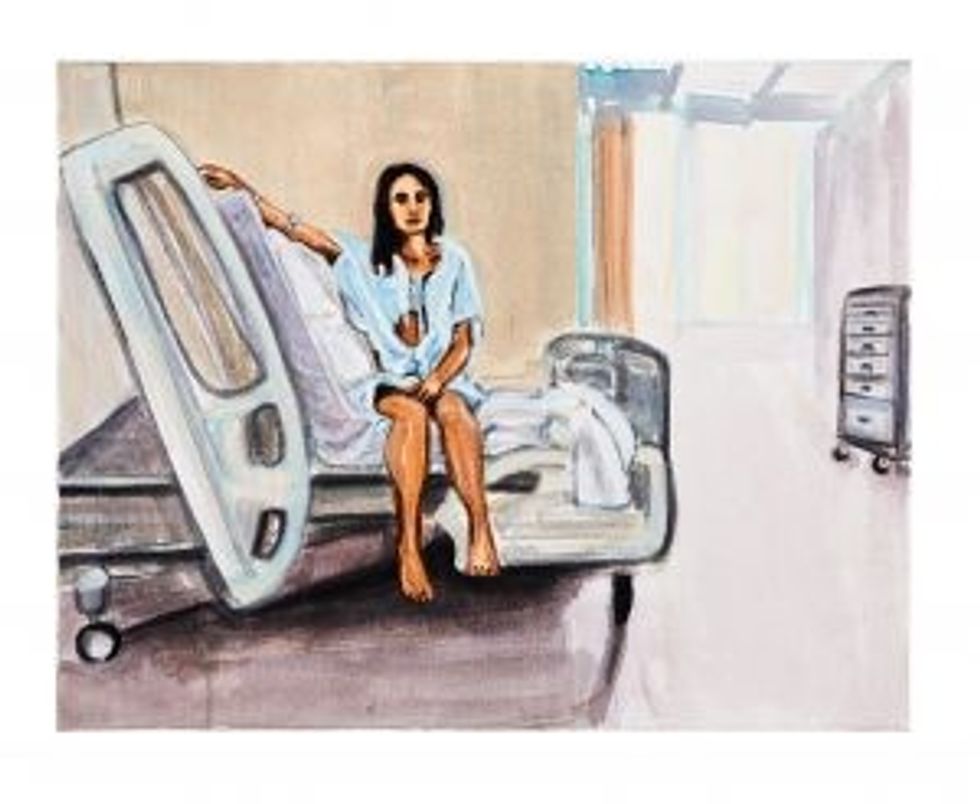
Tell us a little more about the Hayward Gallery exhibition?
At the Hayward Gallery I am showing six paintings of myself and my brother as boys growing up in Bangladesh and India. These include scenes set in Sylhet, Mymensingh, and Kashmir. I am interested in how the memory of a place is often atmospheric – something that paint communicates well. Also, how in childhood the landscape can feel vast, yet the boys occupy a powerful position within the compositions.
Who are you hoping most strongly connects to these works?
I am pleased to have these paintings presented in a survey of current art in the UK. It is important to me that the paintings are shown in public galleries and museums, as I feel the subjects represented will relate to many in this country – memories of childhood, travel, and the politics of who is represented and by whom.
Tell us about your first solo show outside the UK?
I am showing a large body of new paintings at the Tanya Leighton gallery in Berlin. The exhibition is called Arrow and Pulpit – it includes paintings of the two boys (my brother and me) and images of Christian churches in Bengal. I explore the history of missionaries in India, how western paintings are used in churches and worship across the globe, and the impact this has on how we think about Christianity, particularly in relation to questions of empire.
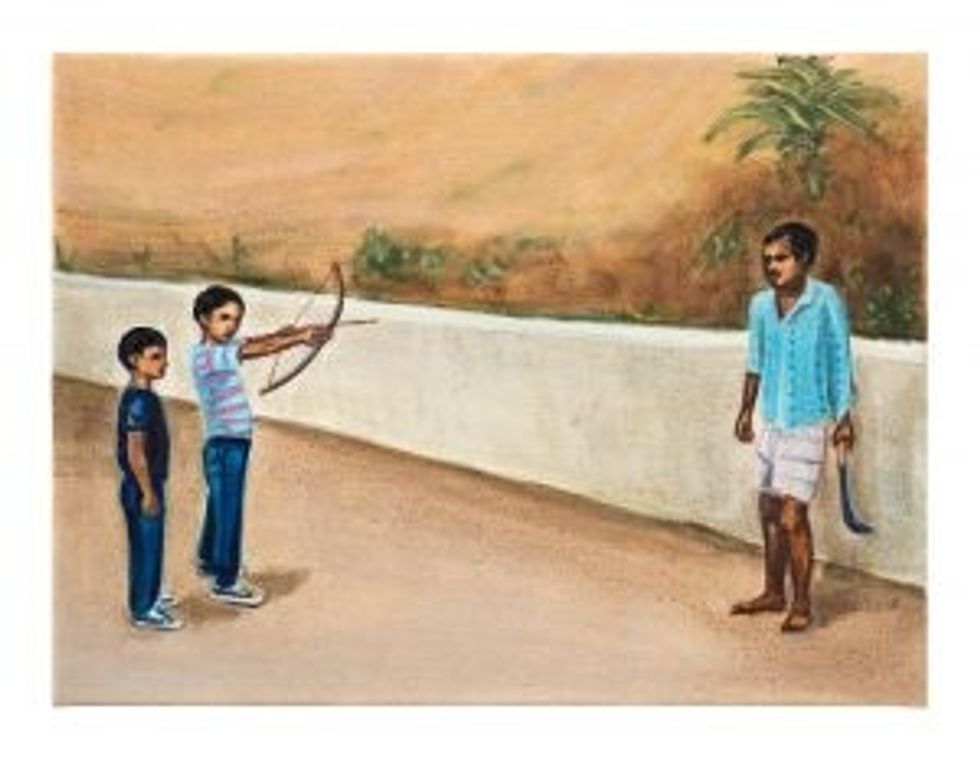
How does that compare to the work you have done in the UK?
Each time I show these paintings in different countries the context is changed – I am interested in how the works will be viewed and received in Germany. In 2019 I had my first show in India (with Jhaveri Contemporary, Mumbai), where the landscape depicted in the paintings chimed with the views outside the window. In Germany and the UK, the exhibitions are more about stepping into another world, yet one which will resonate with many viewers’ experiences.
What is the plan going forward?
To keep painting and developing each of the series of my works. I will have a solo show in New York next year, which is another chance to explore new audiences and readings of the work. In the next two years I will also be showing at Niru Ratnam Gallery in London and again in Mumbai with Jhaveri Contemporary.
Do you have a process when painting?
I like to develop my paintings over a long period of time – working on several paintings (at different scales) at once, in layers of paint. This allows me to paint quickly, but then make decisions slowly about how the paintings evolve. I will sometimes return to a painting years after I began it to complete a work.
What advice would you give any aspiring artists out there?
To find your voice, which is the thing you most want to bring to your art form, whether that is subject matter, approach or theme. Then mine it deeply – don’t just develop a style and keep repeating it.
What does art mean to you today?
I think of art as a way of making sense of life and the world. It’s a way of owning the narrative of one’s life, even when so much is unpredictable and outside of our control.
Visit www.matthewkrishanu.com
















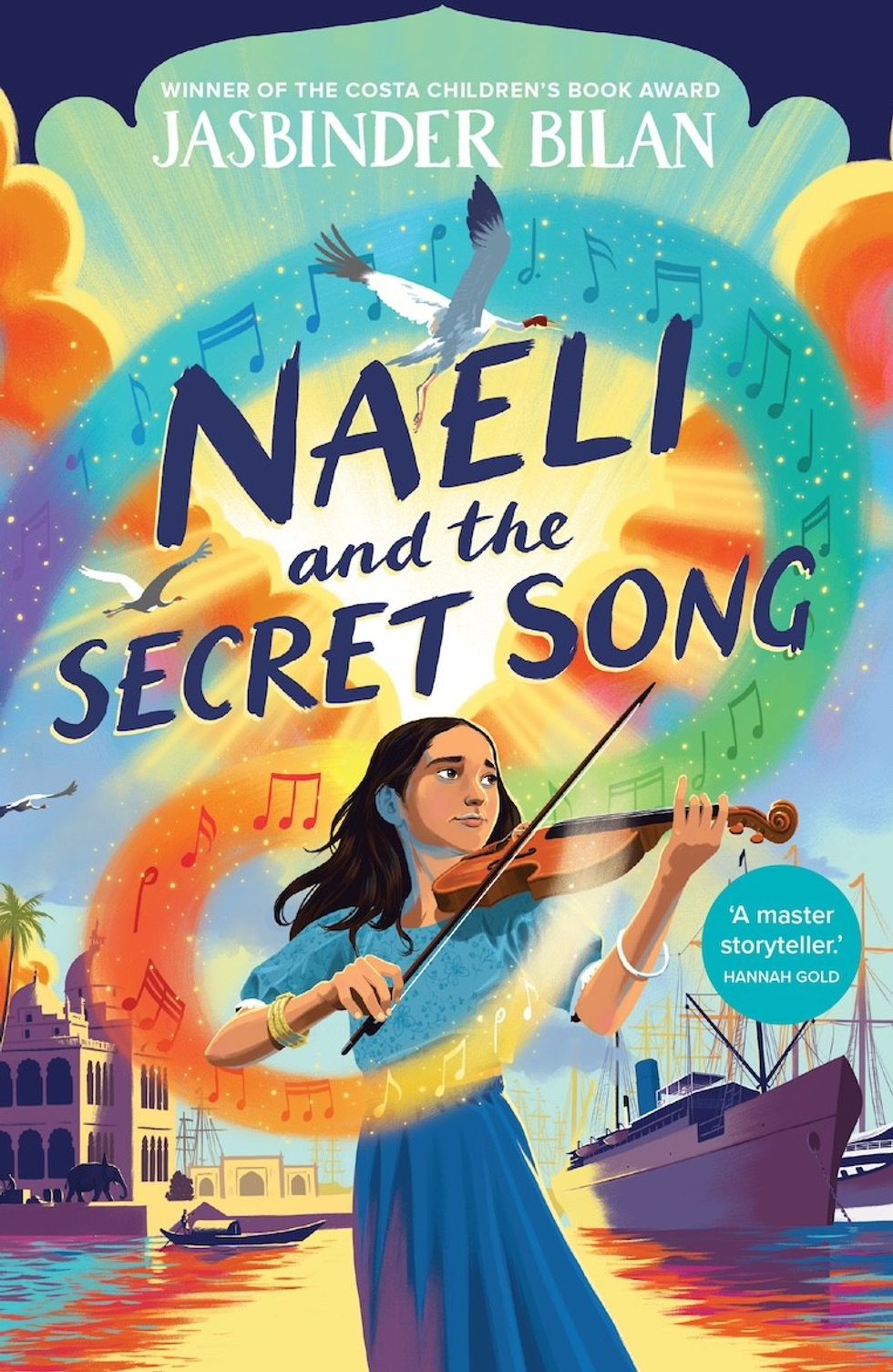 Naeli and the secret song
Naeli and the secret song
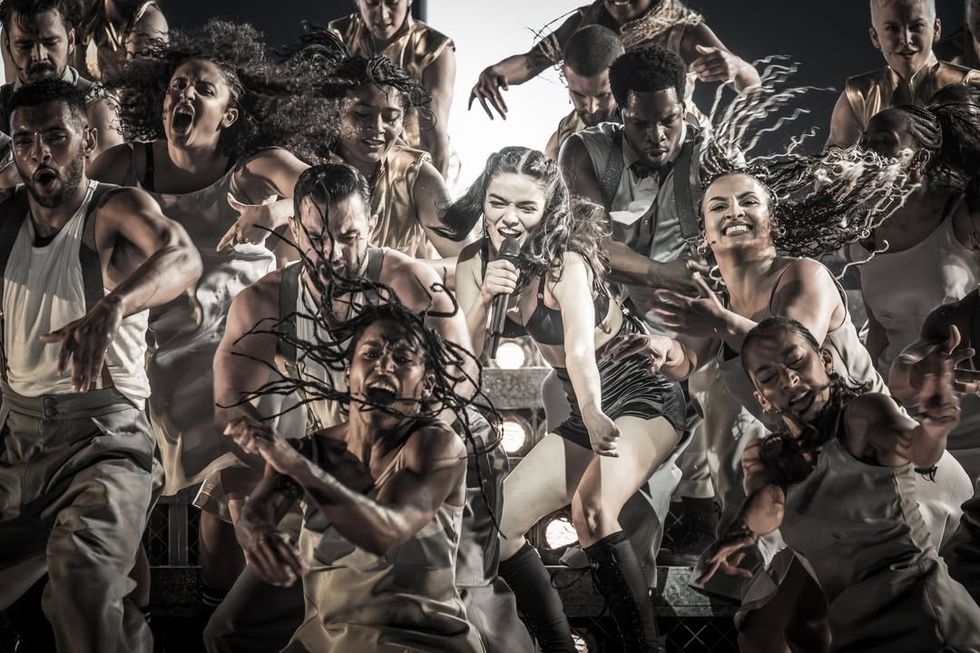 Jamie Lloyd’s Evita with Rachel Zegler set for Broadway after London triumphInstagram/
Jamie Lloyd’s Evita with Rachel Zegler set for Broadway after London triumphInstagram/
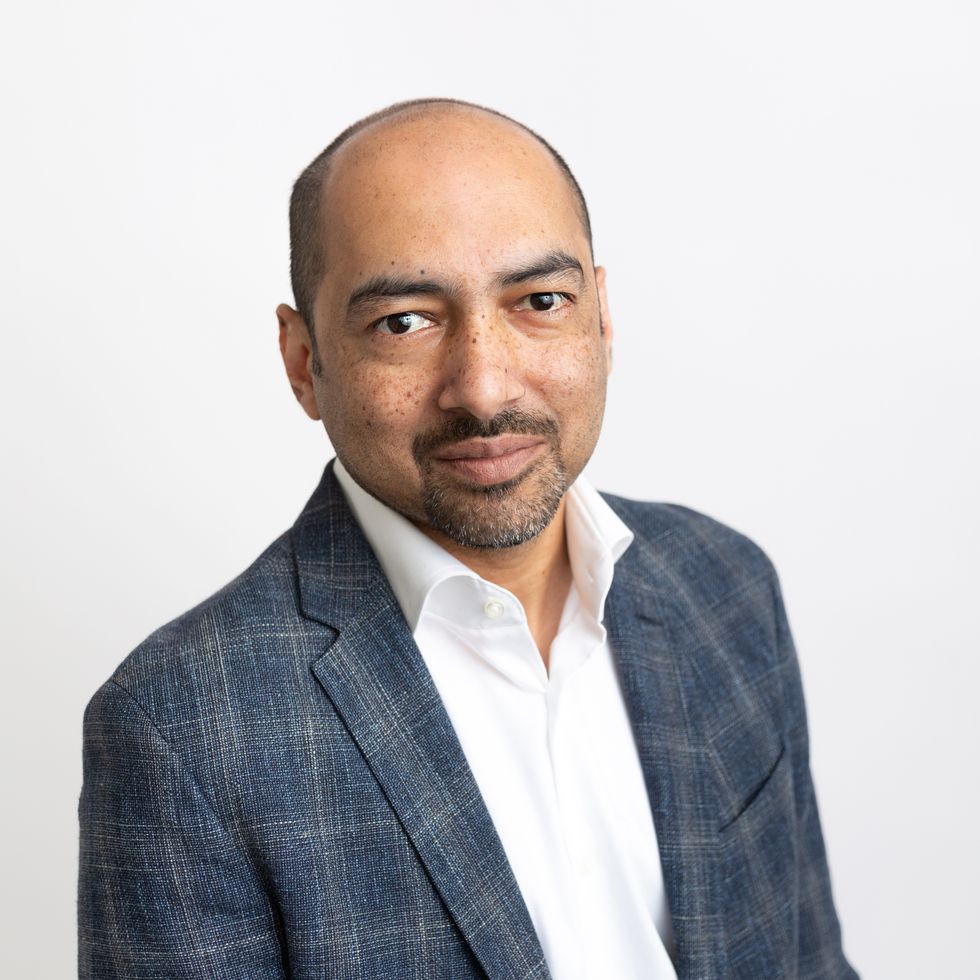 A compelling premise, layered and unpredictable charactersAMG
A compelling premise, layered and unpredictable charactersAMG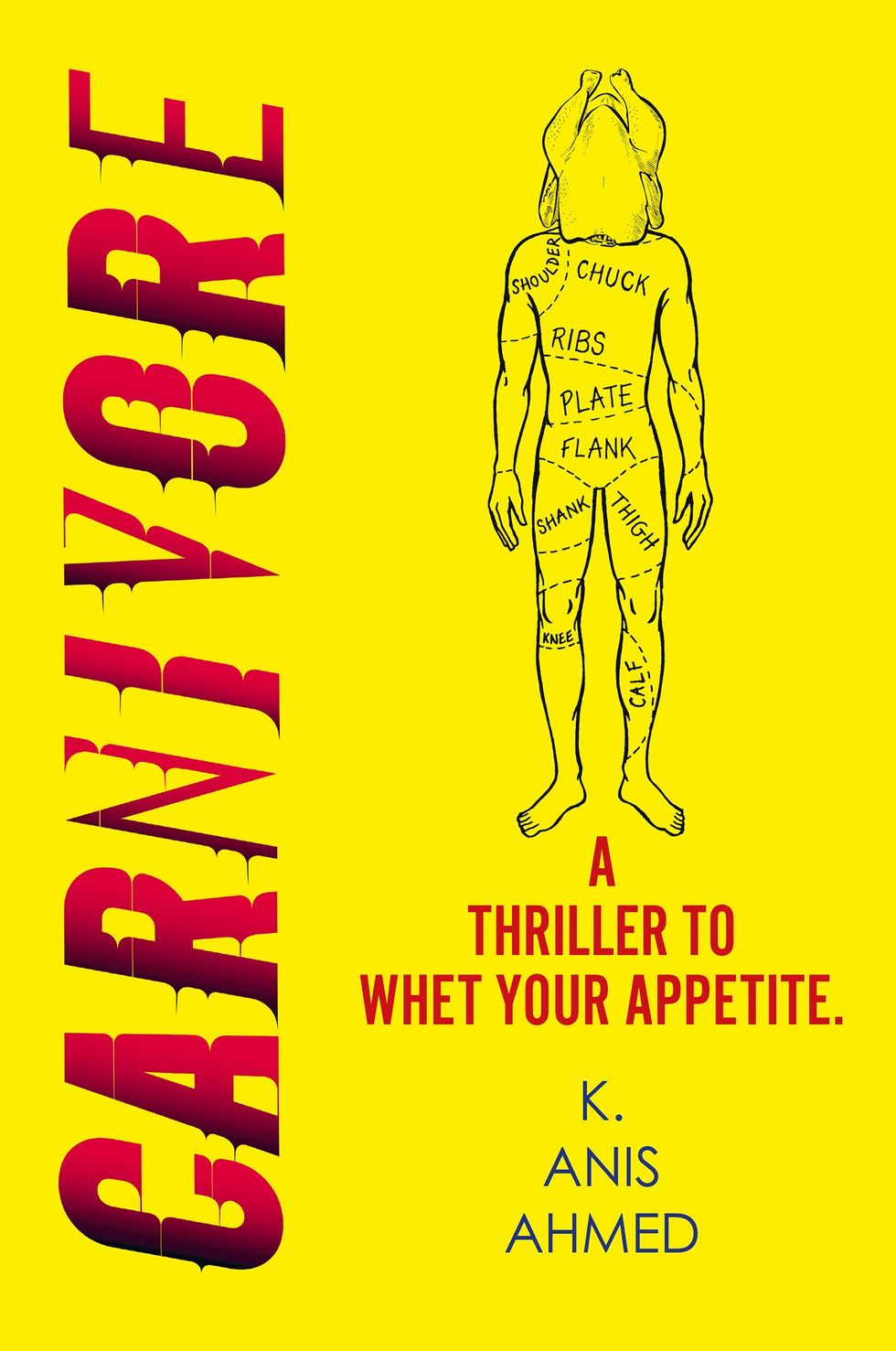 Anyone who enjoys a gripping story with a diverse cast and unexpected twistsHarperFiction
Anyone who enjoys a gripping story with a diverse cast and unexpected twistsHarperFiction
 The Story Teller by Ley Roberts
The Story Teller by Ley Roberts Summer Exhibition coordinator Farshid Moussavi, with Royal Academy director of exhibitions Andrea Tarsia in the background
Summer Exhibition coordinator Farshid Moussavi, with Royal Academy director of exhibitions Andrea Tarsia in the background An installation by Ryan Gander
An installation by Ryan Gander A sectional model of DY Patil University Centre of Excellence, Mumbai, by Spencer de Grey
A sectional model of DY Patil University Centre of Excellence, Mumbai, by Spencer de Grey Rituals and Identity and Theatre of Resistance by Arinjoy Sen
Rituals and Identity and Theatre of Resistance by Arinjoy Sen